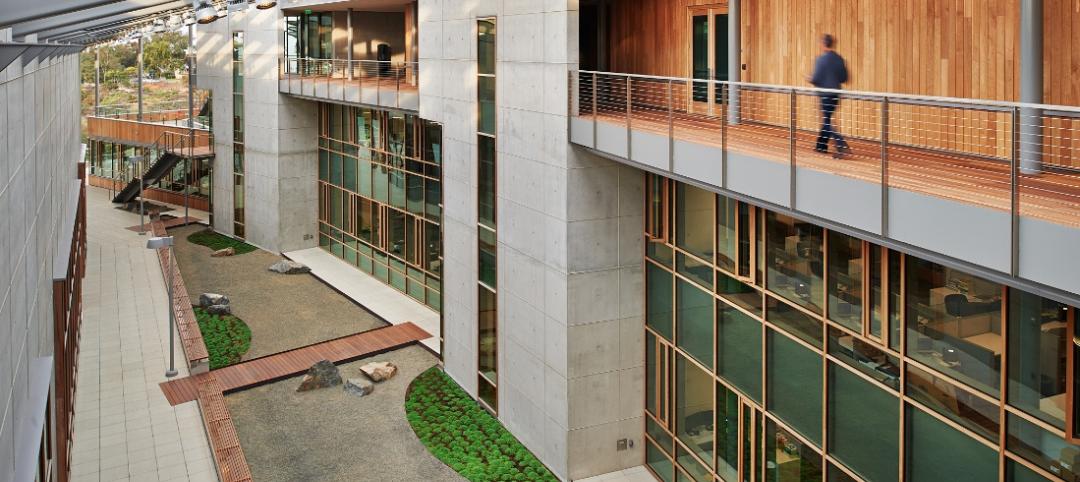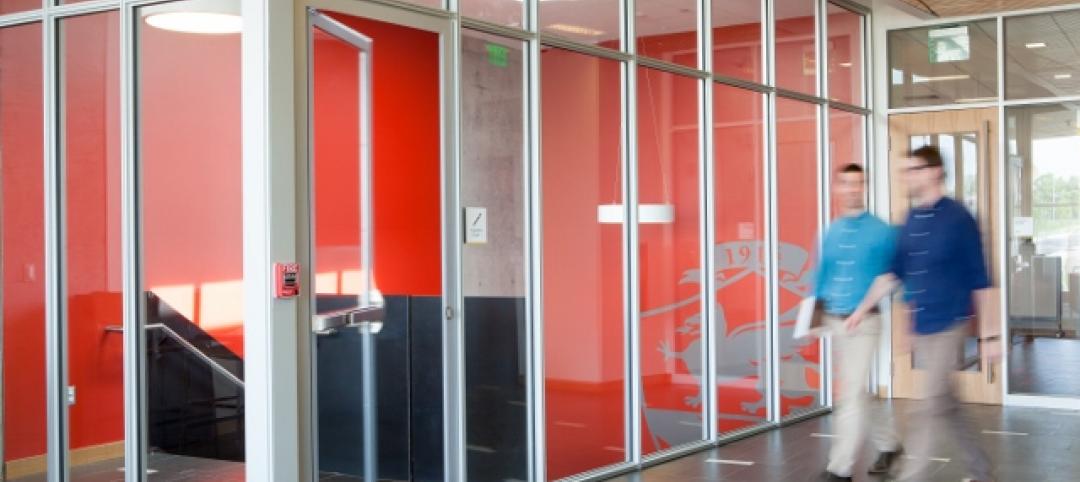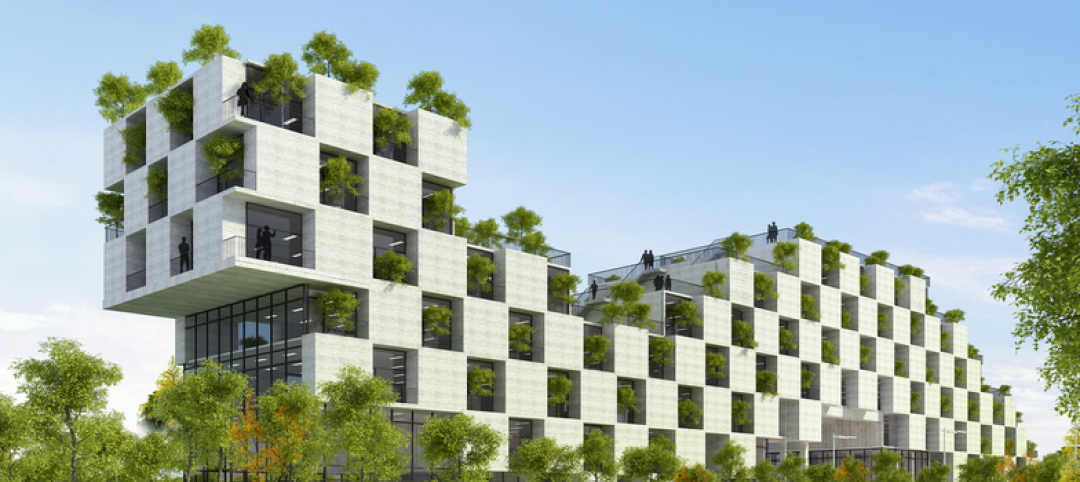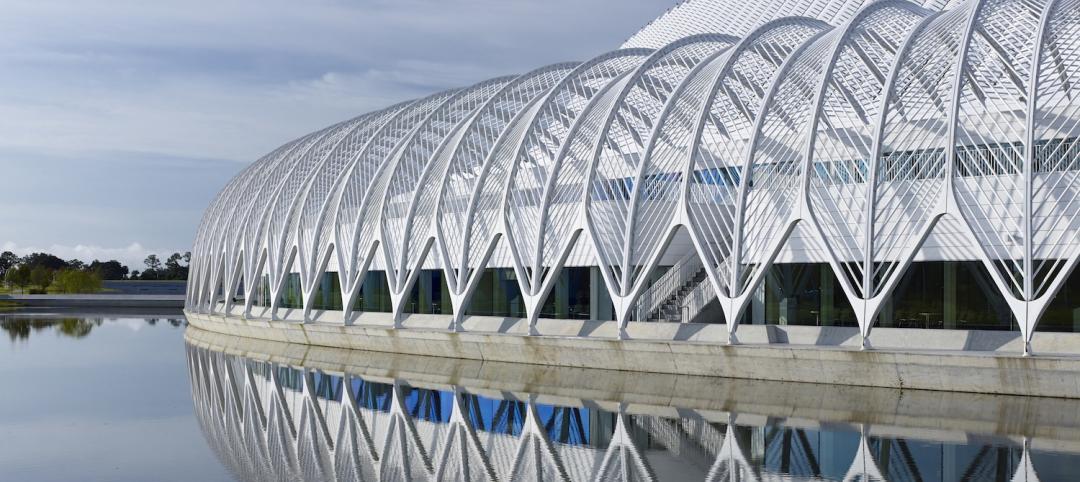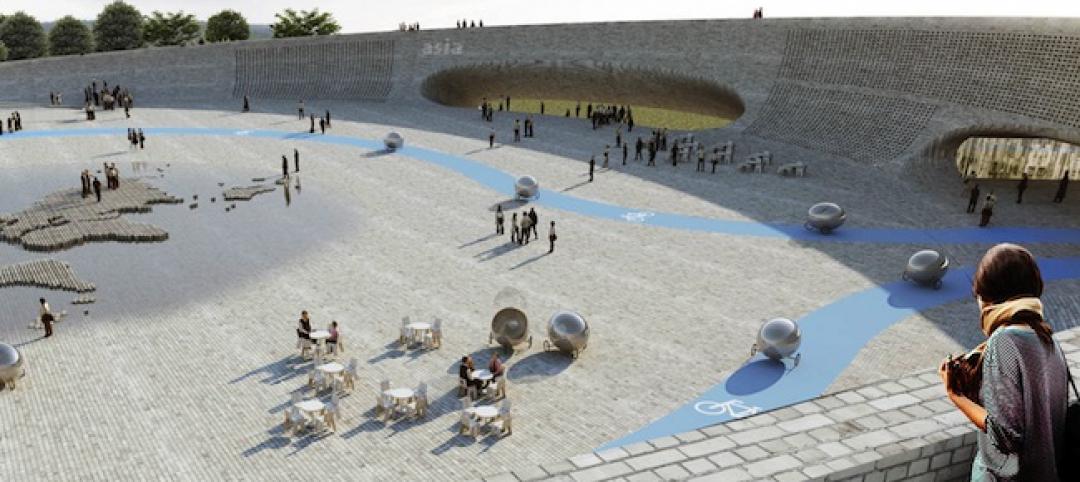The Heights, Bjarke Ingels Group’s first U.S. public school, merges two existing secondary schools (H-B Woodlawn and Eunice Kennedy Shriver) into one 180,000-sf building with space for up to 775 students.
The project, located in Arlington, Va., is situated on a compact site bounded by roads on three sides and a portion of Rosslyn Highlands Park. The Heights supports the visual and performing arts-focused curricula of H-B Woodlawn and the extensive resources for students with specialized educational needs of Enice Kennedy Shriver.
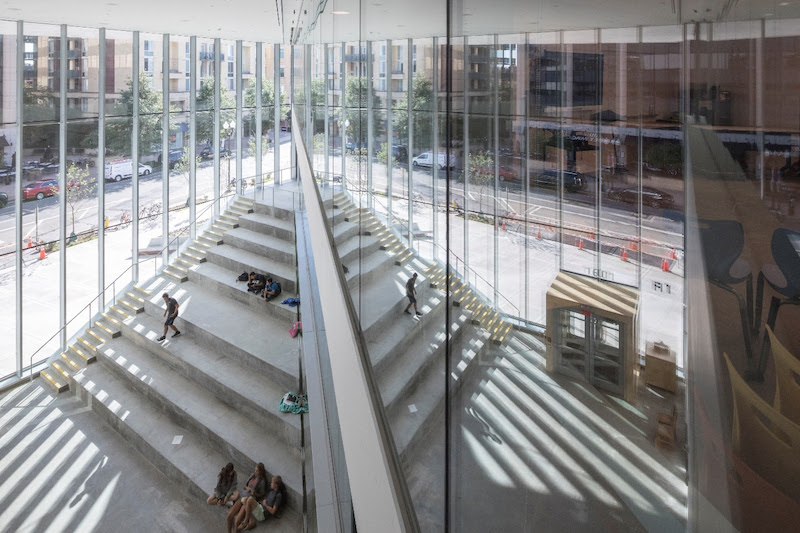
Students and staff are greeted by a triple-height lobby with stepped seating that doubles as an indoor gathering space for student assemblies and public gatherings. Adjacent to the lobby are many of the school’s common spaces including the 400-seat auditorium, main gymnasium, library, reception, and cafeteria. Other student spaces include an art studio, science and robotic labs, music rehearsal rooms, and two performing arts theaters.
See Also: Eight projects showcase the latest trends in student housing
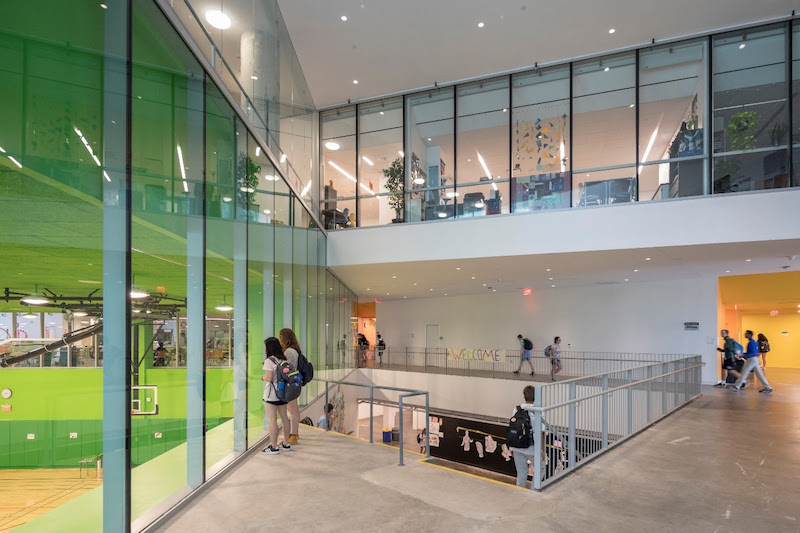
Classroom bars, each defined by its own color, are the primary organizing elements and surround a central vertical core that contains the elevators, stairs, and bathrooms. The Shriver Program occupies two floors of the building, which are accessible from the ground floor and have specialized spaces dedicated to support APS’ Functional Life Skills program as well as privacy and ease of accessibility. The gym, courtyard, occupational physical therapy suite, and sensory cottage are designed to aid in sensory processing.
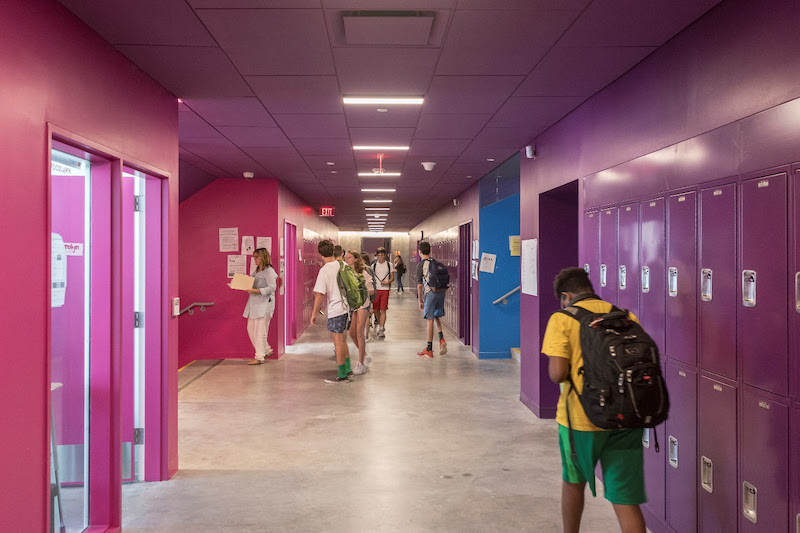
The building is conceived as a stack of five rectangular floorplates that rotate around a fixed pivot point, which creates a cascade of green terraces. The terraces become an extension of the classroom to create an indoor-outdoor learning landscape. The four tiered terraces are connected via a rotating central staircase that cuts through the interior of the building, allowing students to circulate outside. The upper terraces are suitable for intimate classes and quiet study areas while the spacious first terrace and the 18,700-sf recreation field serve as public event venues.
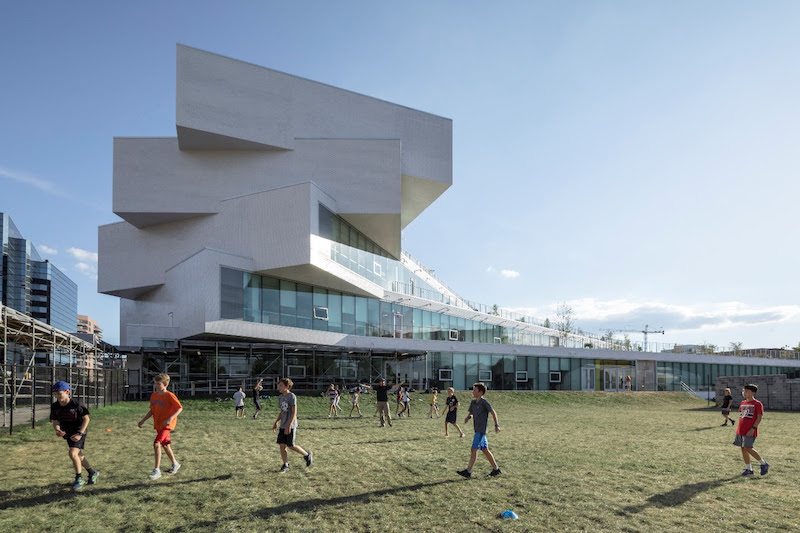
White glazed brick unifies the five volumes and highlights the oblique angles of the fanning classroom bars. The material palette pays homage to the historical architecture of Old Town Alexandria.
The Heights is on track to achieve LEED Gold. Bjarke Ingles Group designed the project with LEO A DALY as the executive architect.

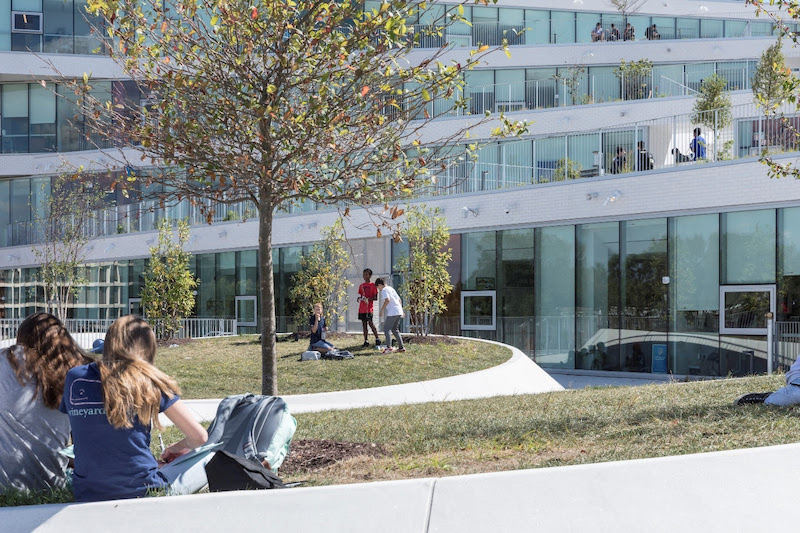
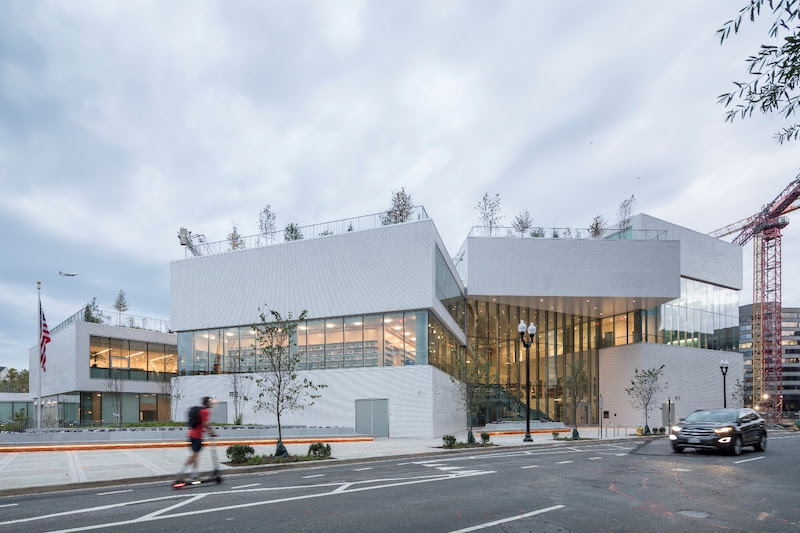
Related Stories
| Aug 25, 2014
Tall wood buildings: Surveying the early innovators
Timber has been largely abandoned as a structural solution in taller buildings during the last century, in favor of concrete and steel. Perkins+Will's Rebecca Holt writes about the firm's work in surveying the burgeoning tall wood buildings sector.
| Aug 21, 2014
Ranked: Top science and technology sector AEC firms [2014 Giants 300 Report]
HDR, Affiliated Engineers, and Skanska top BD+C's rankings of the nation's largest S+T sector design and construction firms.
Sponsored | | Aug 16, 2014
Fire-rated framing system makes the grade at Johnson & Wales University Center
The precision engineering of TGP’s Fireframes Aluminum Series creates narrow profiles and crisp sightlines at Johnson & Wales University Center for Physician Assistant Studies
| Aug 16, 2014
The science of learning: Designing the STEM learning facilities of the future
New technology and changing pedagogies are influencing how to best teach a generation of learners who have never known a world without smartphones or tablets, writes HOK's Kimberly Robidoux.
| Aug 14, 2014
8 do's and don'ts for completing an HVAC life cycle cost assessment
There are many hurdles to overcome when completing a life cycle cost assessment. RMF Engineering’s Seth Spangler offers some words of advice regarding LCCAs.
| Aug 14, 2014
Life cycle cost analysis using energy modeling
A life cycle cost analysis helps a school district decide which HVAC system to use in $198 million worth of future building projects.
| Aug 13, 2014
Campus UX: Why universities should be creating 'branded environments' on campus
When most colleges and universities consider their brands, they rarely venture beyond the design and implementation of a logo, writes Gensler Design Director Brian Brindisi.
| Aug 12, 2014
Vietnam's 'dragonfly in the sky' will be covered in trees, vegetation
Designed by Vietnamese design firm Vo Trong Nghia Architects, the building will be made up of stacked concrete blocks placed slightly askew to create a soft, organic form that the architects say is reminiscent of a dragonfly in the sky.
| Aug 12, 2014
First look: Calatrava's futuristic Main Building opens at Florida Polytechnic University
The $60 million structure is wrapped in a bright-white, aluminum pergola for dramatic effect and solar shading.
| Aug 6, 2014
BIG reinvents the zoo with its 'Zootopia' natural habitat concept [slideshow]
Bjarke Ingels’ firm is looking to improve the 1960s-designed Givskund Zoo in Denmark by giving the animals a freer range to roam.




